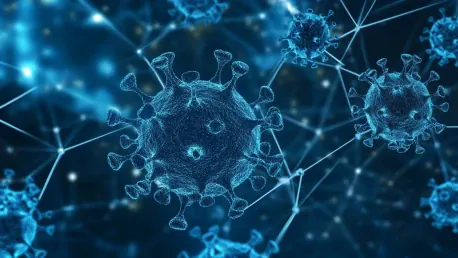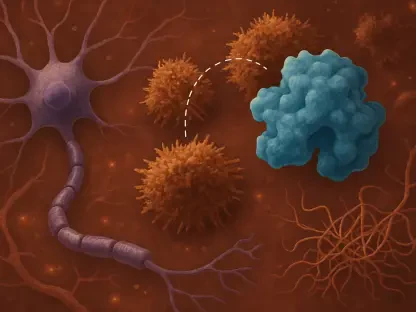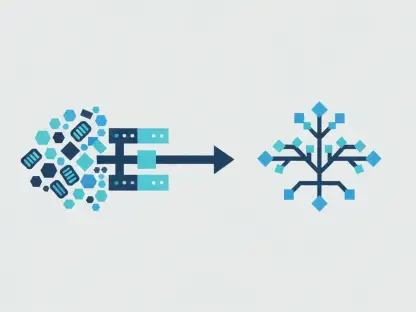The utilization of machine learning to predict nonadherence to antiretroviral treatment (ART) among adolescents in Uganda has unveiled promising solutions. Claire Najjuuko, a doctoral student at Washington University in St. Louis, has led a groundbreaking research initiative aiming to improve ART adherence in low-resource settings using advanced data science techniques. This innovative research is particularly significant as it addresses the high prevalence of HIV among adolescents in sub-Saharan Africa, with Uganda being a substantial contributor to this demographic. The findings demonstrate the potential of machine learning models to positively impact adherence rates, thereby enhancing health outcomes for young individuals living with HIV.
Pioneering Research
Sub-Saharan Africa harbors nearly 85% of the 1.7 million adolescents living with HIV, and Uganda alone represents a significant fraction of this statistic. Despite the free distribution of ART by the government, adherence among adolescents aged 10-16 remains remarkably low, posing a heightened risk for continued virus transmission. Claire Najjuuko’s research, conducted at the International Center for Child Health and Development (ICHAD) in Uganda and directed by advisors Fred M. Ssewamala and Chenyang Lu at Washington University, aims to tackle this pressing issue effectively.
Najjuuko’s primary goal is to establish predictive machine learning models that can identify adolescents at heightened risk of nonadherence to ART. Such predictive capabilities enable healthcare providers to implement focused interventions, thereby significantly improving treatment adherence and overall health outcomes for adolescents living with HIV. This research holds substantial potential to revolutionize clinical approaches and foster better management of ART in low-resource settings.
Methodology and Data Collection
To develop the machine learning models, Najjuuko relied on data from a six-year cluster-randomized controlled trial involving 39 clinics in southern Uganda. This extensive study included adolescents aged 10-16 diagnosed with HIV, aware of their status, receiving ART, and residing within family environments. The research meticulously analyzed data from 647 adolescents, emphasizing socio-behavioral and economic factors alongside adherence history.
The machine learning model emerging from this data demonstrated commendable predictive accuracy, successfully identifying 80% of adolescents at risk for nonadherence while reducing false alarm rates by 14 percentage points compared to traditional adherence history-based models. By integrating diverse variables, the model offers a sophisticated approach to identifying those most in need of targeted interventions, thus improving treatment adherence effectively.
Key Findings
The research identified twelve predictive characteristics that signify possible future nonadherence. Among these, economic indicators emerged as notably significant, underscoring the essential role of economic stability in ART adherence. Key predictive factors included adherence history, child poverty levels, biological relationship to the primary caregiver, self-concept, confidence in saving money, caregiver communication, household size, and school enrollment.
One salient insight revealed that having a savings account is positively correlated with better adherence to ART. This highlights the importance of integrating economic support measures alongside medical and psychological interventions to enhance adherence rates. The findings emphasize that adolescents, often prone to nonadherence due to their quest for independence and stigmatization related to HIV, benefit significantly from economic stability.
Economic and Social Interventions
Adolescents frequently face challenges in maintaining adherence to ART due to factors such as the desire for independence, stigma associated with their HIV status, and complexities involved in managing treatment regimens. Economic stability is shown to be crucial in fostering hope and a sense of responsibility, thereby improving adherence. The research underscores the importance of economic interventions in generating a supportive environment that encourages adherence among adolescents.
Furthermore, the study highlights the necessity of addressing systemic issues such as food scarcity—vital for medication intake—and transportation challenges in low-resource settings. These multifaceted challenges call for comprehensive solutions integrating economic, social, and medical support. Effective strategies that address these barriers will play a critical role in enhancing treatment adherence and health outcomes among adolescents living with HIV.
Collaborative Efforts and Future Directions
The application of machine learning to predict nonadherence to antiretroviral treatment (ART) among adolescents in Uganda has revealed promising solutions. Claire Najjuuko, a PhD student at Washington University in St. Louis, has spearheaded an innovative research project focused on improving ART adherence in low-resource settings through advanced data science techniques. This groundbreaking study holds significant importance given the high rates of HIV among adolescents in sub-Saharan Africa, with Uganda being a major contributor. The research showcases the potential of machine learning models to enhance ART adherence rates, thus improving health outcomes for young people living with HIV. With these findings, there is hope for better management and support for adolescents struggling with adherence, potentially leading to more successful treatment and reduced transmission rates. The initiative not only highlights the critical role of technology in healthcare but also emphasizes the need for targeted interventions in regions with limited resources.









